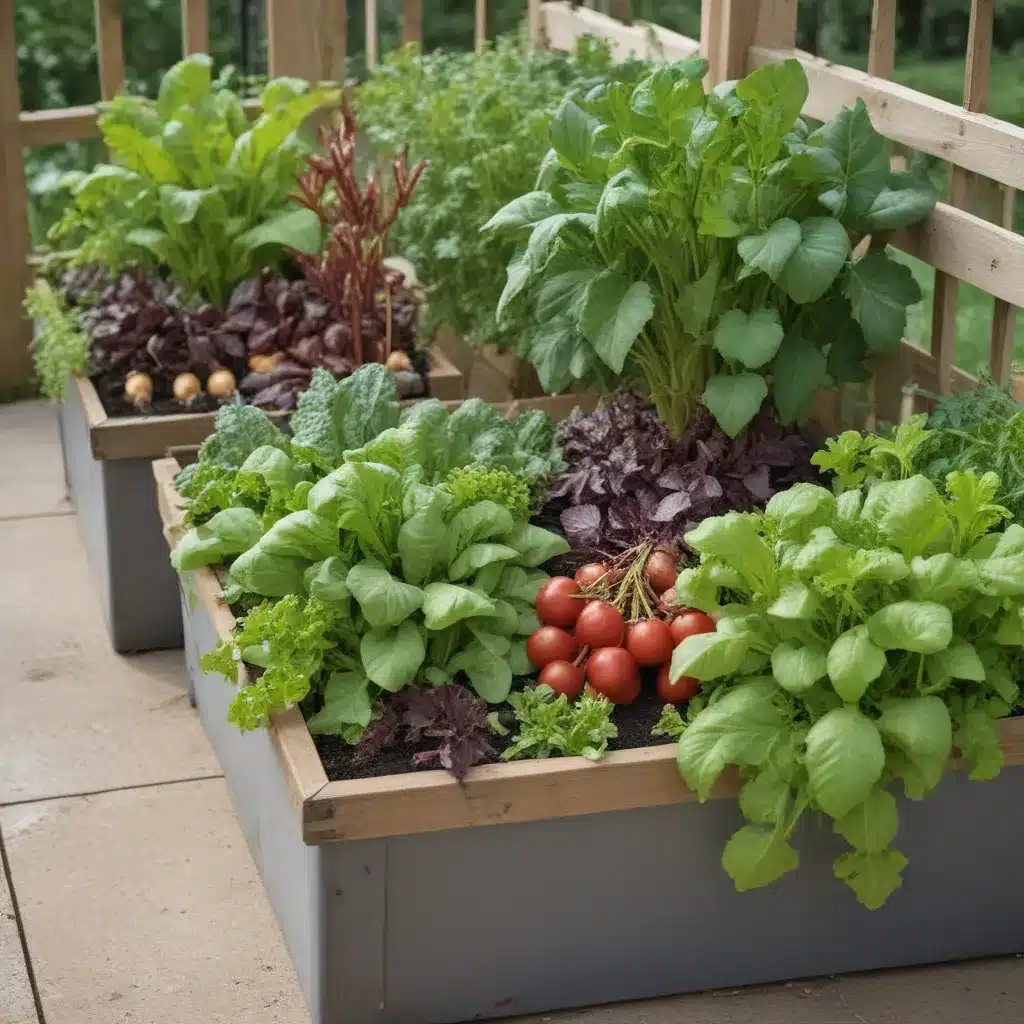If you don’t have the space for a full garden, don’t fret – you can still grow just about any vegetable in a container! The secret to successful container gardening is knowing what type of vessel to choose for each veggie, selecting a nourishing soil, and providing the correct amount of light, water, and fertilization.
As someone with a decent-sized in-ground veggie patch, you might be surprised to learn that I still rely heavily on container gardening. Why? Because it gives me the flexibility to grow all kinds of exciting and unique varieties, plus I can move my little edible oases around to maximize sunlight exposure. And if I ever need to pack up and move, my container garden comes right along with me!
The Best Containers for the Job
Now, not all containers are created equal when it comes to growing veggies. You’ll want to steer clear of unglazed terracotta pots, as their porous nature causes the soil to dry out way too quickly. Metal containers aren’t ideal either, since they can rust over time.
Instead, look for large, sturdy vessels made of food-safe materials like wood, plastic, or even self-watering planters. I’m a big fan of the latter – they make keeping your plants hydrated a cinch, especially if you’re prone to forgetfulness like me. Aim for containers that are at least 10 inches wide and 12 inches deep, as the more soil volume, the better.
If you want to get really creative, you can even upcycle household items into veggie-growing containers. I’ve seen people use everything from old laundry baskets to recycled milk jugs. Just make sure whatever you choose has adequate drainage holes at the bottom.
Choosing the Right Growing Medium
Once you’ve selected your containers, it’s time to fill them with the perfect soil. Regular garden dirt is a definite no-no, as it tends to compact down and inhibit drainage in containers. Instead, opt for a high-quality potting mix formulated for vegetables and herbs.
I like to make my own custom blend, using about 50% compost or aged manure, 25% coco coir, and 25% perlite or vermiculite for optimal drainage. You can also find pre-made veggie-specific mixes at most garden centers. Just be sure to avoid anything with added “time-release” fertilizers, as those can sometimes do more harm than good.
Providing the Right Growing Conditions
Once your containers are filled, it’s time to think about where to place them. Most vegetables need at least 6 hours of direct sunlight per day, so scout out the sunniest spot in your yard, patio, or balcony. If you live in a particularly hot climate, you may need to provide some afternoon shade to prevent your plants from overheating.
Proper watering is also critical for container veggies. I like to stick my finger into the soil up to the first knuckle – if it feels dry, it’s time to water. During the hottest months, I may have to do this twice a day to keep my plants from wilting. To make things even easier, consider installing a simple drip irrigation system.
And don’t forget to feed your container veggies! I like to mix in some organic granular fertilizer before planting, then supplement with a diluted liquid feed every couple of weeks. This ensures my plants have all the nutrients they need to really thrive.
Choosing the Right Varieties
When it comes to selecting which veggies to grow, look for compact, bush-type varieties that are well-suited for container culture. Cherry tomatoes, mini peppers, and bush beans are all fantastic choices. Leafy greens like lettuce, kale, and Swiss chard also do exceptionally well in pots.
I personally love growing things like patio-sized eggplants, dwarf zucchini, and even potatoes in my container garden. The harvests may be a bit smaller than their full-sized counterparts, but the flavor is just as amazing. Plus, I can tuck them into all sorts of nooks and crannies around my backyard.
No matter which veggies you decide to grow, be sure to give them the proper support they need. Tomatoes and pole beans, for example, will benefit greatly from a trellis or cage to prevent their heavy fruits or vines from toppling the whole plant.
A Bountiful Harvest, Right at Your Fingertips
With a little planning and the right know-how, you can transform even the tiniest outdoor space into a thriving edible oasis. And the best part? You don’t even need a massive in-ground garden to enjoy the satisfaction of growing your own nutrient-packed produce.
So why not give container gardening a try? A1 Landscape Construction in Temecula, California would be happy to help you get started. From selecting the perfect pots to offering tips on maintaining a healthy, high-yield veggie patch, our team of experts can provide all the guidance you need. Who knows – you may just end up with the most envious container garden on the block!




